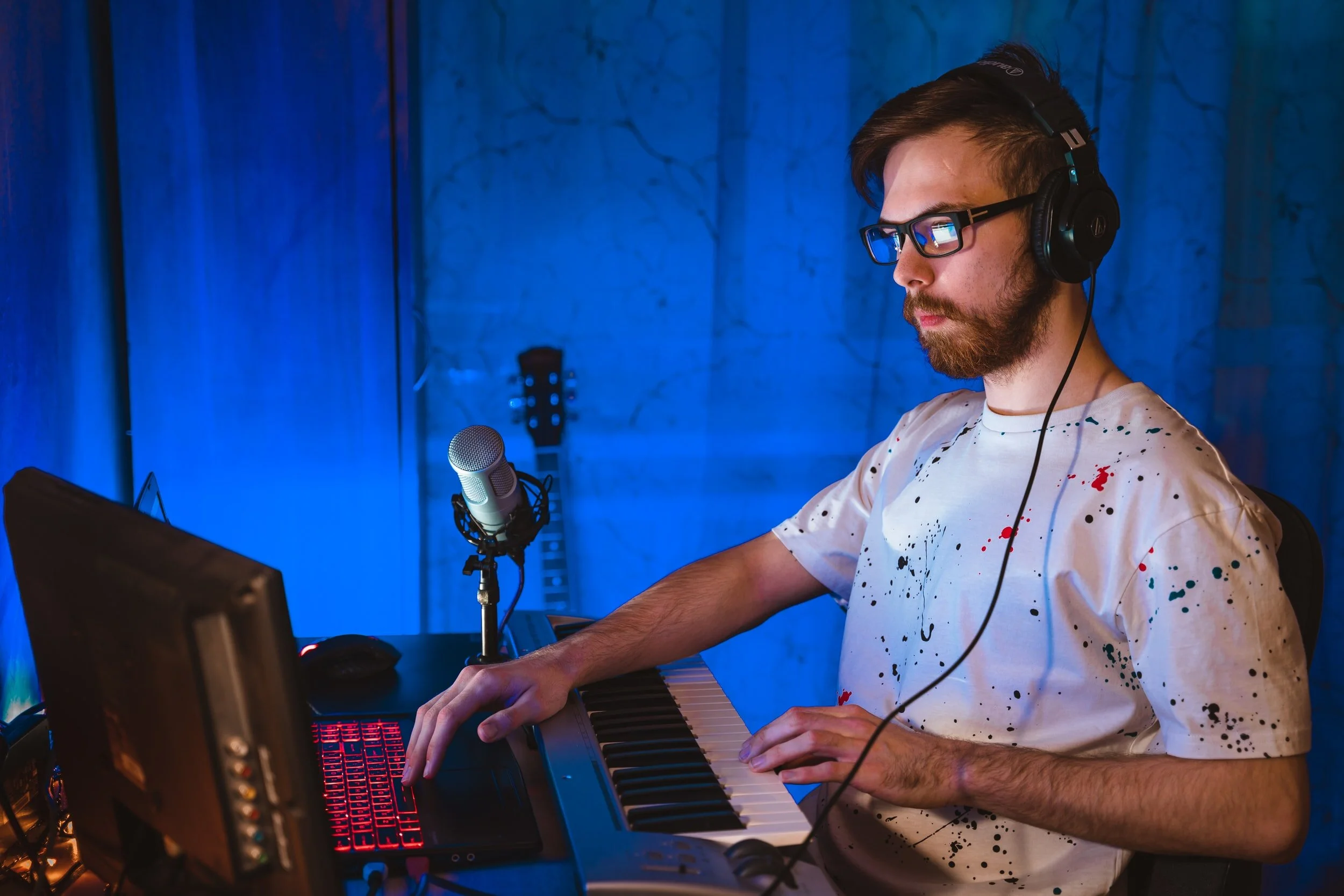The Music Industry Gained Some Weight During COVID
That’s not me, but it is one of the millions of people who set up nifty home studios to stream content.
I’ve spent a career in the creative industry as an advertising and marketing writer and Creative Director. Lesson #1 is always that creativity comes from constraints. It’s an adage more commonly known as “necessity is the mother of invention.” By knowing the limitations of a circumstance, product, service, and understanding the pain points that people face, we can always find or create a solution to the challenge.
I love to play music with friends in my spare time. And like many musicians who play something other than a guitar, piano, violin, or other instruments that can “perform on its own”, the pandemic of 2020 and social distancing eliminated my chances for playing in person with others, as well as upended the careers of millions of other musicians at all levels.
Tours, gigs, recording sessions, rehearsals were all canceled overnight. Not much happened in the early months of the global lockdown, but after 4 or 5 months, some creative solutions began emerging. Enterprising church music directors taught their musicians and vocalists to record their individual parts on an iPhone, then compiled the tracks into a multiscreen video for streaming during online worship. Professionals like Marcus Miller and Leland Sklar each assembled their own COVID-screened bands of musicians and sold tickets to concerts streamed online. And by June of 2020, the K-Pop sensation BTS set the record for the largest online audience. Also in June, in the midst of a world in isolation, an enterprising conductor named Jens Illemann assembled an online orchestra with over 1,320 musicians from 44 nations. The pandemic isolation even inspired Jason Bateman, Will Arnet, and Sean Hayes to launch one of the fastest-growing podcasts in history: Smartless.
Fat Cash Is Flowing Into The Creator Economy Now
Across the globe, professionals and amateurs began regularly streaming live from their homes and backyards on Facebook. In many ways, the pandemic fueled a massive movement in the creator economy that is likely to grow for many years to come. A new global study from Neoreach estimates that as of May 2021, the creator economy is booming with an estimated $104B market on track to grow to $1 Trillion within the next decade. This is a movement as significant as the desktop publishing movement of the 1990s, which set the stage for the world to understand what being “photoshopped” meant, or enabled a generation of writers to write the next great American novel.
Today, anyone with some talent, a good laptop, an adequate USB interface, some good mics, and cables can write, record, and distribute the next great hit, podcast, or symphony. There are new teams who make great livings as full-time musicians writing catalogs of tracks for licensing as the sound beds under personal, corporate, and big-name studio films.
Video, music, and podcast creators are flooding to YouTube, Snapchat, Twitch, OnlyFans and Patreon, Cameo, and iTunes. Soundcloud alone has 25 million creators on its platform. New sites like PearPop have launched, connecting online creators to monetize their content and audiences with opportunities for paid collaboration.
That’s just the tip of the iceberg. Neoreach also reports that between October of 2020 and May 2021, more than $800M in venture capital was invested in creator economy startups. This is still just the beginning. More than 50 million Creators combined with the 500+ new startups joining the scene are huge signs that the Creator Economy is booming in spite of, and maybe even because of, the pandemic.
Yes, that is some serious economic weight. It’s also a great reason to be bullish on the music scene post-pandemic. So, keep your chops up and get creative with your own form of musical expression.

